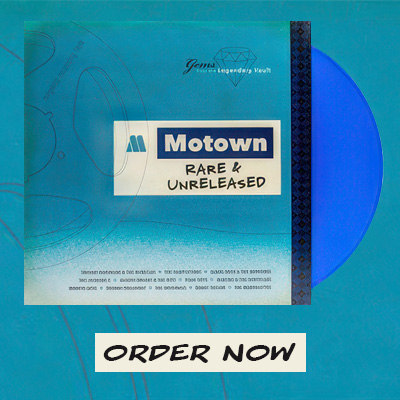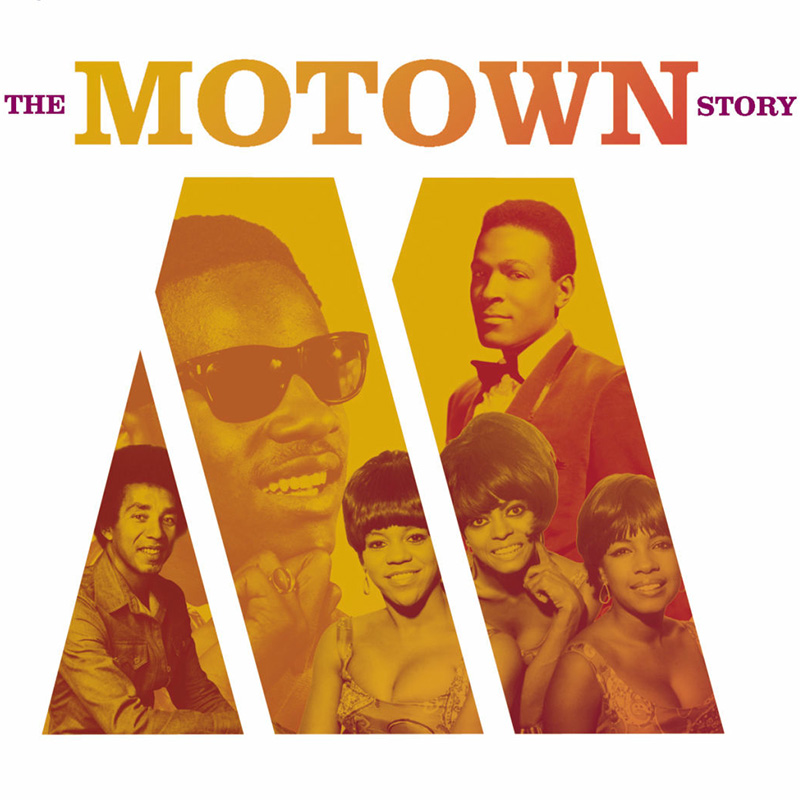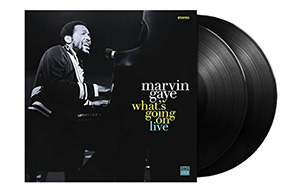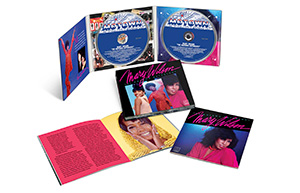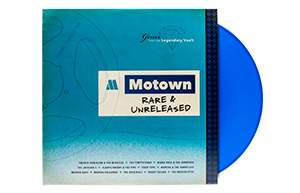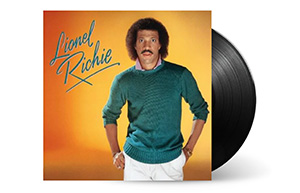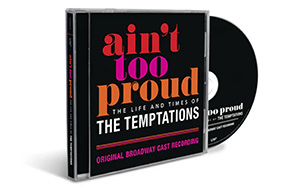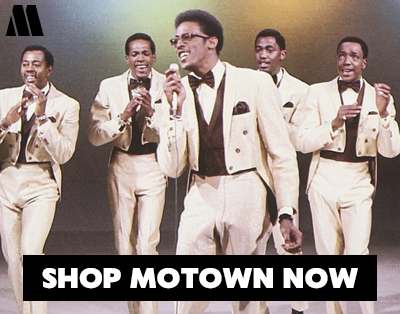The Motown Story
Five reasons to listen:
- Fifteen No. 1 hits on the Billboard Hot 100, including Motown’s first, “Please Mr. Postman” by the Marvelettes.
- The company’s breakthrough 45 on the pop charts, “Money (That’s What I Want)” by Barrett Strong.
- Three songs written by the boss, Berry Gordy Jr., including the Contours’ “Do You Love Me.”
- Twenty-one No. 1 hits on the Billboard R&B charts, including Motown’s first, “Shop Around” by the Miracles.
- Thirteen tracks by the Detroit hit factory’s all-time most successful songwriting team, Holland/Dozier/Holland.
Four fast facts:
- The Motown Story contains eighteen tracks which reached the British Top 10, including two-time smash “What Becomes Of The Brokenhearted” by Jimmy Ruffin.
- Eight songs written and produced by Smokey Robinson, including the Temptations’ signature tune, “My Girl.”
- Seven songs written and produced by Norman Whitfield, including Marvin Gaye’s chart-topping giant, “I Heard It Through The Grapevine.”
- The rarest Motown single ever: Frank Wilson’s “Do I Love You (Indeed I Do).”
Full Track Listing:
In detail:
- It is almost 60 years since the son of a plasterer, Berry Gordy Jr., began building what grew into an astonishing hit factory and the most-recognized record company of the 20th century. He did this in America’s heartland, away from its traditional music capitals, but the iconic map of Detroit printed in the center of almost every Motown 45 was more than a lesson in geography. The music and artists associated with that city and that company have entertained and empowered millions of people around the world, and have influenced the sound of popular music ever since. This is The Motown Story.
- “Money (That’s What I Want)” by Barrett Strong is widely thought to be the first hit recorded at 2648 West Grand Boulevard, the two-storey house which Gordy and his wife Raynoma bought in the summer of 1959. They set up recording facilities in what had previously been a photographer’s studio in the basement, and made “Money” with gospel-trained Strong. The 45 reached No. 2 on the Billboard R&B charts and the Top 30 of the Hot 100, suggesting that the “Hitsville U.S.A.” sign erected on the front of 2648 West Grand was going to be an accurate description of the activities within.
- William “Smokey” Robinson of the Miracles was the singer/songwriter who most helped to shape the Motown story in its early years, from the moment that Gordy spotted his talent at an audition. The budding entrepreneur went on to manage Smokey’s group, producing their early records and, as the Tamla and Motown labels found their feet, achieving his company’s biggest R&B and pop success to date with 1961’s “Shop Around.” Robinson went on to create some of the most magical music of the ’60s, including such hits as “Ooo Baby Baby,” “The Tracks Of My Tears” (arguably his signature song) and “I Second That Emotion.” In addition, Smokey launched the Temptations’ career with a couple of major pop-chart achievers, “The Way You Do The Things You Do” and “My Girl,” and made Mary Wells the first female star of Motown. For her, he wrote and produced such Top 10 gems such as “You Beat Me To The Punch,” “Two Lovers” and Mary’s biggest-seller, “My Guy.” That was Motown’s first major international success, leading to a British tour for Wells with a group which was also shaping a new world order: the Beatles.
- By now, Berry Gordy was devoting more time to the business of Motown, less time making music. Songwriting, of course, was how he broke into the game in the first place, delivering hits (“Reet Petite,” “Lonely Teardrops,” “To Be Loved”) for Jackie Wilson in the late ’50s. Motown’s first significant seller, “Money (That’s What I Want),” was penned by Gordy and company receptionist Janie Bradford. Another of his best-known works was “Do You Love Me (Now That I Can Dance),” a crossover giant for the Contours in 1962 – and the first major success on the Gordy label, which he introduced that year to accompany the Motown and Tamla brands. Later, the Motown founder would return to the recording studio for specific projects, such as co-producing a fresh sound for Diana Ross & the Supremes (“Love Child”) and shaping the first hits for the Jackson 5. For the latter, Gordy was part of The Corporation, the team which wrote, arranged and produced “I Want You Back,” “ABC” and “The Love You Save,” which all reached the peak of the Billboard Hot 100.
- Motown made history in other ways. In the summer of 1963, an adolescent Stevie Wonder became the first recording artist to score a simultaneous No. 1 single (“Fingertips – Pt. 2”) and album (Recorded Live: The 12 Year Old Genius) on the Billboard charts. That same year was also good to Martha Reeves & the Vandellas: “Heat Wave” became the first Top 10 pop success for the group, and for the record’s makers, Holland/Dozier/Holland. In 1964, Martha’s trio made what is widely seen as their defining hit, “Dancing In The Street,” co-written by Marvin Gaye.
- The achievements of Holland/Dozier/Holland are a vital part of the Motown story. Brian Holland was an early recruit to Berry Gordy’s workshop: he co-wrote and co-produced its first No. 1 on the pop charts, “Please Mr. Postman” by the Marvelettes. Eddie Holland initially prospered as a recording artist, then settled into a backstage role, writing with Brian and Lamont Dozier, another singer turned songsmith. It was that combination which busted the Supremes wide open in 1964-65 with five consecutive No. 1 singles (“Come See About Me” on this set being the third), then sent the Four Tops to the summit with “I Can’t Help Myself (Sugar Pie, Honey Bunch”) and “Reach Out I’ll Be There.”
- Holland/Dozier/Holland were responsible for still more Hitsville highlights, including Martha Reeves & the Vandellas’ “Nowhere To Run,” Kim Weston’s “Take Me In Your Arms (Rock Me A Little While)” and the Isley Brothers’ “This Old Heart Of Mine (Is Weak For You).” They also wrote and produced “Love’s Gone Bad,” an R&B chart-rider for a young protégé of Berry Gordy named Chris Clark. Coincidentally, Clark is connected to the most unusual track on this collection, by Frank Wilson. He was part of Motown’s small California team in the mid ’60s, writing and producing for Brenda Holloway, among others. Wilson was a vocalist, too, and in 1965 cut his own tune, “Do I Love You (Indeed I Do),” for release on Motown’s V.I.P. label. A conversation with Berry Gordy led him to forego a singing career in favor of a continuing backroom role, and copies of his V.I.P. single were scrapped. In 1966, Chris Clark’s voice was overdubbed onto the track for release as a 45, but that was ditched, too. Years later, Wilson’s version was bootlegged from a rare surviving copy, and became hugely popular on Britain’s Northern Soul circuit. In 2009, one of the original pressings was auctioned – and sold for more than £25,000.
- Britain played an important part in the Motown story. It was where Berry Gordy’s first solo star, Marv Johnson, scored a Top 10 hit in 1960, and where a fan club known as the Tamla Motown Appreciation Society helped the young stars of Hitsville U.S.A. to realize they were popular abroad. Several of the tracks here were bigger hits in the U.K. than in the U.S., including R. Dean Taylor’s “There’s A Ghost In My House” and the Elgins’ “Heaven Must Have Sent You.” Jimmy Ruffin’s “What Becomes Of The Brokenhearted” was another smash in Britain – so popular that it cracked the Top 10 on original release in 1966, and then again on re-release in 1974.
- If Smokey Robinson and Holland/Dozier/Holland helped to shape the Motown story during its first five years, then songwriter/producer Norman Whitfield started earning respect soon afterwards. His 1964 production of “Needle In A Haystack” by the Velvelettes was a wisecracking girl-group record, but it was writing and producing for the Temptations which laid down the law. “(I Know) I’m Losing You” is a perfect example, when David Ruffin’s lead vocals arrested everyone in hearing range and locked up the group’s fourth consecutive No. 1 R&B hit. Then in 1968, Ruffin’s successor, Dennis Edwards, captured hearts and minds with “Cloud Nine,” a psych-out co-written and produced by Norman. Little wonder that it won Motown’s first-ever Grammy© award.
- Marvin Gaye was yet another Whitfield beneficiary. The singer’s recording of “I Heard It Through The Grapevine,” produced by Norman and co-written with Barrett Strong, gave Motown a new chapter by becoming its biggest-selling single of the 1960s. That impact – seven weeks at No. 1 – propelled Marvin into the top rank of Berry Gordy’s superstars, and earned him the right within a couple of years to decide exactly how his music and his career should evolve. “What’s Going On” was the start of that socially-conscious rebirth; later, Marvin made an equally forthright statement with “Let’s Get It On,” reshaping his image once more. Meanwhile, Norman Whitfield had continued to craft songs to mirror the political tumult of the early ’70s, such as Edwin Starr’s “War” and the Undisputed Truth’s “Smiling Faces Sometimes.”
- The Motown story took a new direction when the company quit Detroit for Los Angeles in 1972. Its newest superstars, the Jackson 5, may have been raised in Gary, Indiana, but it was in California that Motown recorded the brothers’ extraordinary run of No. 1 hits, beginning with “I Want You Back.” The group even lived in Diana Ross’ Los Angeles home for a while, as they adjusted to life and work on the left coast. Similarly, the Commodores originally came from Tuskegee, Alabama, but their very first hit, the instrumental “Machine Gun,” was cut in California – and given its name by none other than Berry Gordy. Its run on the charts came after the Commodores’ stint as an opening act for the Jackson 5, on one of the brothers’ record-setting, nationwide concert tours.
- The Commodores advanced to superstardom in their own right later that decade, with the songs of Lionel Richie helping to fuel the rocket ride. When he decided to leave the group for a solo career, his writing talent took him still further. Lionel’s second album, Can’t Slow Down, contained five consecutive Top 10 songs, including “All Night Long (All Night),” which spent four weeks at No. 1. Another major Motown star of the ’80s was equally self-sufficient: “Super Freak (Part 1)” by Rick James was just one of the many hits which this native of Buffalo, New York, wrote, arranged and produced himself. Rick was not short of experience: he had first signed to Motown in 1966 as one of the Mynah Birds, a rock band of which Neil Young was also part. “Super Freak” featured the Temptations on backing vocals, and was the centerpiece of Rick’s most successful album, Street Songs.
- Motown arrived at a crossroads in 1988, when Berry Gordy decided to sell the record company to MCA and an investment firm, Boston Ventures. Under this new ownership and the leadership of a successful MCA Records executive, Jheryl Busby, Motown set about developing a new generation of stars. One of these was Boyz II Men, a quartet of young singers from Philadelphia who were influenced by the musical legacy of that city – and Detroit. The title of their first hit single, a crossover smash in 1991? “Motownphilly,” naturally. Three years further on and Boyz II Men set an industry record with “I’ll Make Love To You,” which spent fourteen weeks at No. 1 on the Billboard Hot 100. Just one more remarkable chapter in The Motown Story.
Just sayin’:
“Motown was a product of my search for happiness. I was happy writing songs, then I decided to find people to sing my songs. And then I didn’t like the way other people were producing them, so I produced them. Then I decided to publish them. Each time, I would have another business. And when I found people to sing my songs, I found that these people had this great potential that had not been discovered.” – Berry Gordy, speaking to students at Yale University, April 1985.




